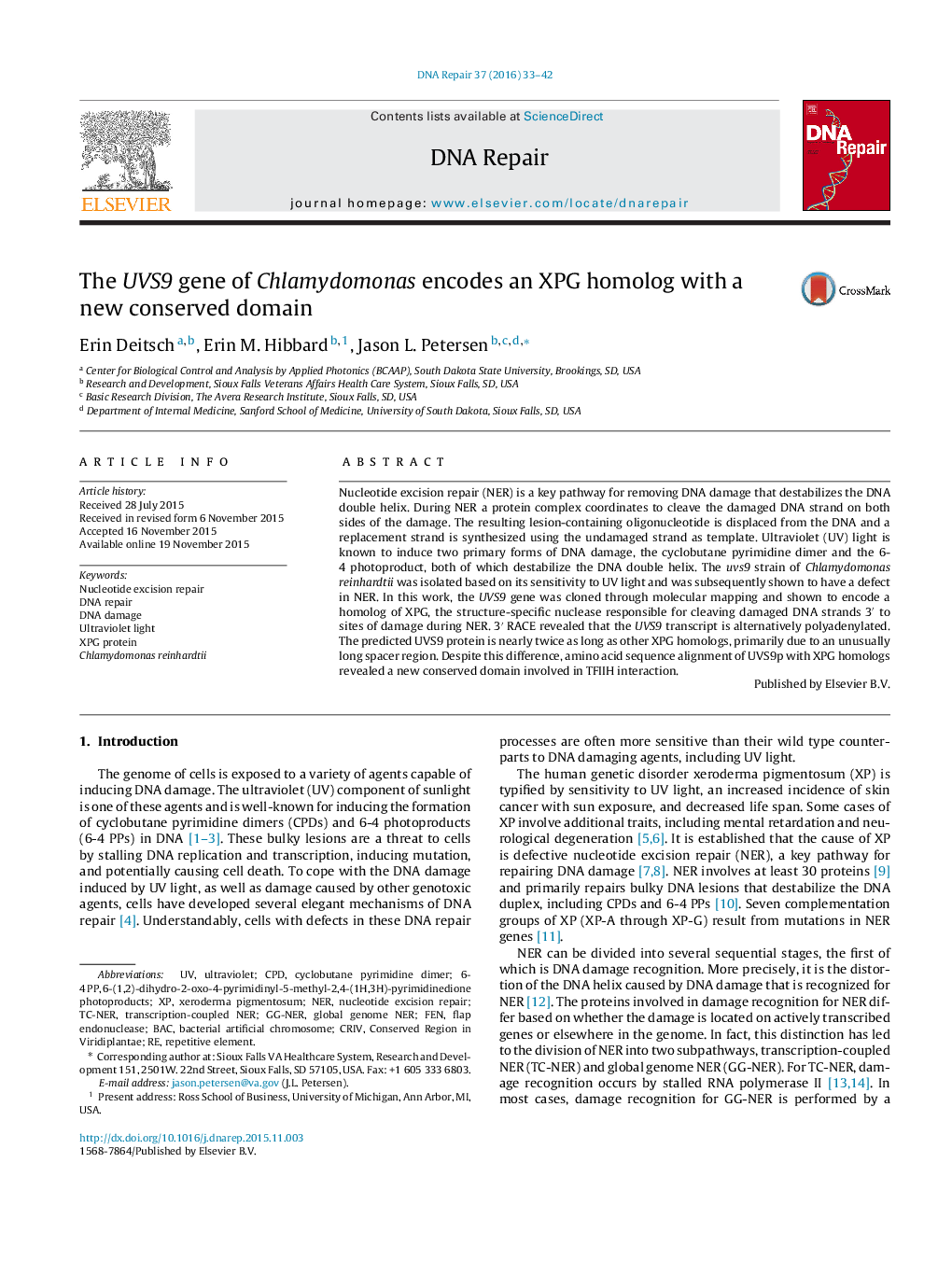| Article ID | Journal | Published Year | Pages | File Type |
|---|---|---|---|---|
| 1980018 | DNA Repair | 2016 | 10 Pages |
•A gene encoding an XPG homolog is mutated in the Chlamydomonas uvs9 strain.•UVS9 is alternatively polyadenylated.•Discovery of a new conserved domain in XPG homologs.
Nucleotide excision repair (NER) is a key pathway for removing DNA damage that destabilizes the DNA double helix. During NER a protein complex coordinates to cleave the damaged DNA strand on both sides of the damage. The resulting lesion-containing oligonucleotide is displaced from the DNA and a replacement strand is synthesized using the undamaged strand as template. Ultraviolet (UV) light is known to induce two primary forms of DNA damage, the cyclobutane pyrimidine dimer and the 6-4 photoproduct, both of which destabilize the DNA double helix. The uvs9 strain of Chlamydomonas reinhardtii was isolated based on its sensitivity to UV light and was subsequently shown to have a defect in NER. In this work, the UVS9 gene was cloned through molecular mapping and shown to encode a homolog of XPG, the structure-specific nuclease responsible for cleaving damaged DNA strands 3′ to sites of damage during NER. 3′ RACE revealed that the UVS9 transcript is alternatively polyadenylated. The predicted UVS9 protein is nearly twice as long as other XPG homologs, primarily due to an unusually long spacer region. Despite this difference, amino acid sequence alignment of UVS9p with XPG homologs revealed a new conserved domain involved in TFIIH interaction.
